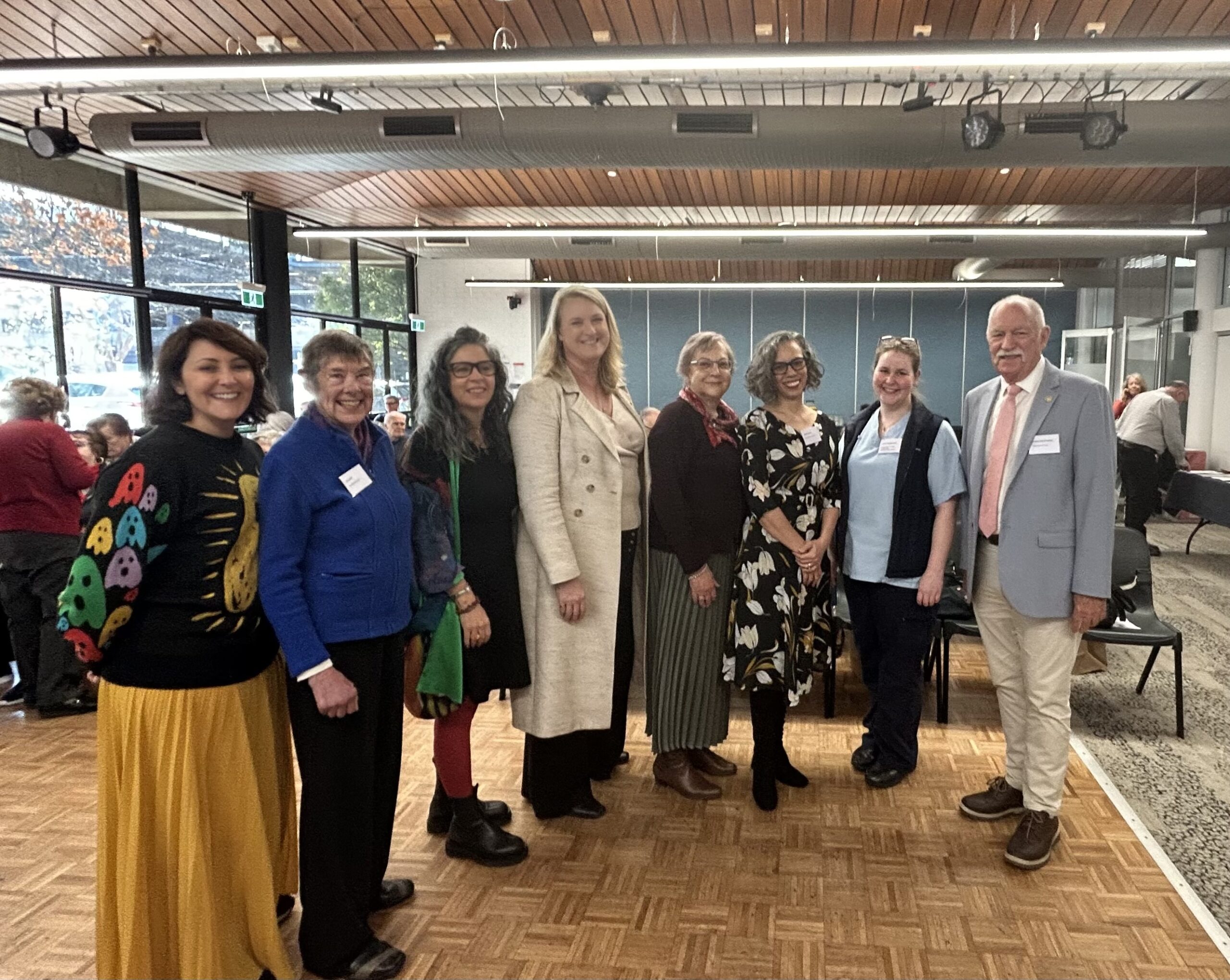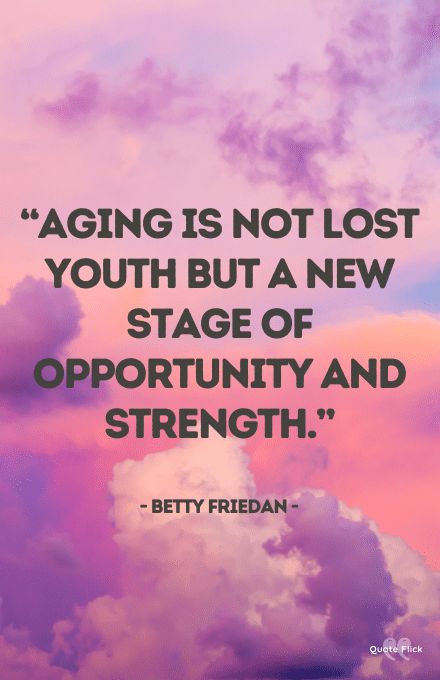 COTA organised Dying to Know Day (August 8th) COTA under the auspices of North Sydney MP, Kylea Tink. NSW member and dying well advocate Jill Nash co-organised a fantastic line up of speakers to discuss Death, Dying and Grief.
COTA organised Dying to Know Day (August 8th) COTA under the auspices of North Sydney MP, Kylea Tink. NSW member and dying well advocate Jill Nash co-organised a fantastic line up of speakers to discuss Death, Dying and Grief.
Jill spoke poignantly about the loss of her baby daughter and then her husband when she was just 41. Informed by these traumatic experiences, Jill is taking control of her future by gathering information and documents and starting personal conversations now, so that her family are prepared for her death and dying when the time comes.
Alice Mantel, another COTA NSW member, also shared her specialist legal expertise on how to go about getting your affairs in order many years before you may think you will need to.
Alice is also the featured expert in the Planning for the Unexpected series produced by OWN NSW.
Category: Retirement
What is the cost of dying?
Like everything else, the cost of dying is increasing as much as the rising cost of living. A study commissioned by Australian Seniors and CoreData in August 2023, The Cost of Death Report 2.0 found that estimated funeral costs have increased by more than 20% for burials and cremations since 2019. In 2023, the average burial costs $11,039, compared to $9,055 in 2019. Similarly, the average cremation now costs $8,045, compared to $6,334 in 2019.
The study revealed that we are paying up to $18,652 for a basic burial funeral, and up to $5,953 for a basic cremation funeral. This is due to the rising costs of funeral services – including embalming, viewing, transportation, and professional fees – along with the cost of coffins and burial plots to name a few.
A third of the responders who recently helped pay for a funeral experienced some form of financial hardship. Two-thirds of those who experienced financial hardship said that it took months to financially recover.
Saying goodbye to those we hold dear should be a time of love and unity. Regrettably, this is not always the case. It’s no secret that funerals can exact a heavy financial toll, but they can also create tension between family and friends. Unfortunately, more than a third of responders encountered arguments with loved ones over funeral finances, adding weight to an already heavy situation.
Further, the study suggests that a trend is emerging where families are pressuring us to spend more on funerals than initially planned, a trend which has more than doubled since 2019.
Consequently, it seems our funeral preferences are changing. Many of us are now opting for simpler services (26%), being more cost-conscious (24%), and choosing cremations or cheaper alternatives to traditional burials (22%). Some of us are even getting creative and considering a DIY funeral (9%).
Tradition is taking a back seat as we focus less on mourning and more on celebrating life. In fact, most (83%) of us now prefer the celebratory approach. We want a funeral that reflects us – who we are and what makes us, us. An example of this are our changing music preferences, moving away from conventional funeral songs. Instead, iconic artists like Elvis Presley, Queen, Frank Sinatra, and Elton John emerged as the most common choices.
On the other hand, many of us are yet to discuss our wishes with loved ones. In fact, only 1 in 2 (53%) of us have made our families aware of our funeral preferences. For those of us who are yet to have this conversation, it’s important that we communicate our funeral wishes to our nearest and dearest to ensure we receive the farewell we desire.
Australian Seniors: The Cost of Death 2.0 Report, November 2023, https://www.seniors.com.au/documents/australian-seniors-series-cost-of-death-report-2023-whitepaper.pdf
Retirees face increased cost of living driven by global factors, but superannuation is buffering the impact, says ASFA
As skyrocketing inflation pressurises household budgets worldwide, the Association of Superannuation Funds of Australia (ASFA) says Australian retirees stand in stark contrast to their overseas counterparts who do not have the safety net provided by compulsory superannuation.
ASFA Deputy CEO, Glen McCrea says despite the current pressure on household budgets, Australian retirees are in a stronger retirement position than their global peers because of Australia’s robust superannuation system and retirement pillar settings.
“In contrast, the age pension remains affordable for the government in Australia where, in aggregate, retirees on average have larger private retirement savings balances than in most countries in the world. This helps cover costs during tougher times, providing a brighter outlook for Australian retirees than is the case for their international counterparts,” said Mr McCrea.
While the major categories of expenditure including food, transport and energy have all increased over the past quarter, analysis of those increases reveals that the causes lie mainly outside Australia.
The ASFA Retirement Standard September Quarter 2022 figures have risen in lockstep with quarterly inflation. Couples aged around 65 living a comfortable retirement now need to spend $68,014 per year and singles $48,266, both up by 1.9 per cent on the previous quarter. The ASFA Comfortable budget assumes one major trip overseas every seven years.
Over the year to September 2022, the amount needed for a single person to fund a comfortable retirement has risen by 6.7 per cent and for a couple by 6.6 per cent, slightly lower than the current CPI of 7.3 per cent.
Strong price rises were recorded across all food and non-food grocery products in the September quarter. These increases reflected a range of price pressures including supply chain disruptions, weather-related events, such as flooding, and increased transport and input costs.
In the 12 months to the September quarter fruit and vegetables prices rose 16.2% and dairy products increased 12.1%. Dairy and related products rose 6.8% due to higher milk prices.
Over the year to the September quarter, imported inflation saw oils and fats up 19.3%, coffee up 10.7% and gas 16.6% and automotive fuel 18.0%. These prices are set to remain high while geopolitical concerns persist.
Increased demand, high fuel prices and capacity constraints saw domestic travel and accommodation up 10.8% over the year and international travel and accommodation up 25.3%.
Meals out and take away foods rose 2.9% due to rising input costs and ongoing supply and labour shortages. Alcohol rose 1.4% due to the increase in the bi-annual excise tax for alcohol on 1 August.
Details for the various updated budgets follow.
Table 1: Budgets for various households and living standards for those aged around 65 (September quarter 2022, national)
| Household type | Single Modest | Couple Modest | Single Comfortable | Couple Comfortable |
| Housing – ongoing only | $109.24 | $122.66 | $128.37 | $133.94 |
| Energy | $35.05 | $47.08 | $44.41 | $55.07 |
| Food | $104.04 | $192.89 | $134.52 | $233.80 |
| Clothing | $20.86 | $39.64 | $27.86 | $51.88 |
| Household goods and services | $37.12 | $43.51 | $82.45 | $101.52 |
| Health | $53.33 | $103.11 | $109.02 | $204.32 |
| Transport | $103.93 | $110.70 | $169.82 | $183.93 |
| Leisure | $104.30 | $163.73 | $205.69 | $309.20 |
| Communications | $17.99 | $20.27 | $22.50 | $29.29 |
| Total per week | $585.86 | $843.57 | $924.64 | $1,302.95 |
| Total per year | $30,582 | $44,034 | $48,266 | $68,014 |
Table 2: Budgets for various households and living standards for those aged around 85 (September quarter 2022, national)
| Household type | Single Modest | Couple Modest | Single Comfortable | Couple Comfortable |
| Housing – ongoing only | $109.24 | $122.66 | $128.37 | $133.94 |
| Energy | $35.05 | $47.08 | $44.41 | $55.07 |
| Food | $104.04 | $192.89 | $134.52 | $233.80 |
| Clothing | $20.86 | $39.64 | $27.86 | $51.88 |
| Household goods and services | $54.05 | $77.78 | $160.70 | $192.51 |
| Health | $93.02 | $129.74 | $153.58 | $241.95 |
| Transport | $41.68 | $52.09 | $46.88 | $57.30 |
| Leisure | $67.46 | $96.70 | $140.39 | $196.53 |
| Communications | $17.99 | $20.27 | $22.50 | $29.29 |
| Total per week | $543.65 | $778.84 | $859.21 | $1,192.28 |
| Total per year | $28,379 | $40,656 | $44,851 | $62,237 |
More information
Costs and summary figures can be accessed via the ASFA website, https://www.superannuation.asn.au/media/media-releases/2022/media-release-17-november-2022
Let’s talk about women and retirement
Why is retirement different for women? Women retire with about 60% of the superannuation funds that men have. They live 5 years longer and they are far more reliant on the aged pension. On the plus side – women are more likely to retain their friendship networks, more likely to be the principal carer for their partner, their parents and their grandchildren, as well being more likely to volunteer to help others.
Listen to my wide-ranging discussion with community radio 2RDJ broadcaster, Neil Lithgow about women and retirement. Listen here:
Australia’s health by socio-economic status
However you describe it, being poor, disadvantaged, or living in a low socioeconomic area is more likely to make you more susceptible to preventable chronic diseases such as heart disease, arthritis and diabetes.
Australia’s Health Tracker by Socioeconomic Status 2021 reports on the health status of Australians based on their socioeconomic standard which the study has found has a major impact on people’s health. Families and individuals with limited resources not only have more chronic disease, they are at greater risk of dying prematurely as a result of chronic health conditions. People living with mental ill-health are less likely to participate in employment, which in itself, is associated with an improvement in general mental health levels.
The ten million people living in the 40% of communities with lower and lowest socioeconomic status have much higher rates of preventable cardiovascular diseases, cancer, diabetes or chronic respiratory diseases than others in the population. These communities also have the highest rates of suicide throughout the nation.
Risk factors that are likely to contribute to this higher rate of illness and premature death include:
• Physical inactivity
• Lifetime alcohol consumption
• Daily tobacco use
• Unemployment as a result of mental health issues.
These health disparities within the Australian population are persistent despite considerable policy reform and efforts to improve services in recent decades. The targets for a healthier Australia were developed by the Australian Health Policy Collaboration, a national network of leading health experts and organisations. The Collaboration has worked with the support of the Mitchell Institute, Victoria University since 2014 to influence public and policy awareness and action to reduce high rates of preventable chronic disease in the Australian population.
The report sets health targets for medical conditions such as:
• Obesity – Obesity is a risk factor for cardiovascular disease, high blood pressure, type 2 diabetes, asthma, back pain and some cancers.
• High cholesterol – High levels of low-density lipoprotein cholesterol are a risk factor for heart disease. National data from 2011-12 is the most recent available data and indicated that close to one-third of all socioeconomic groups were estimated to have high cholesterol levels.
• High blood pressure – Rates of reported high blood pressure are relatively consistent across socioeconomic groups. High blood pressure is often caused by poor diet, physical inactivity, obesity and excessive alcohol consumption. It is a risk factor for chronic conditions including stroke, heart diseases, and chronic kidney disease
• Diabetes – Hospitalisations and deaths related to diabetes are, respectively, 2 and 2.3 times as high in the lowest socioeconomic communities compared to the highest.
Australia’s Health Tracker by Socioeconomic Status 2021 report, The Mitchell Institute at Victoria University. Australia’s Health Tracker by Socioeconomic Status 2021 report
Find your new opportunities

COVID-19 impacts during 2020
Grandparents reported feeling disconnected and isolated from their children and grandchildren during the COVID restrictions imposed during 2020.
In two surveys conducted by the Australian Institute of Family Studies during each half of 2020, three out of 10 grandparents said that prior to the COVID-19 outbreak, they provided childcare to their grandchildren at least weekly. Of those grandparents, 14% of respondents with grandchildren aged under 13 years provided child care daily or several times a week, another 16% provided child care about once a week and around half provided care at least once per month.
Grandparent care and care for grandparents were most impacted during the pandemic, with respondents reporting that for many families, grandparents did not provide the usual care to their grandchildren for some months during the pandemic. Care for grandchildren ceased because of restrictions imposed on visiting family members or because parents increased their work from home.
Many grandparents reported feeling disconnected from their family and missing out on family traditions during the lockdown period. While some grandparents were able to access technological solutions to connect with family, others found the technology frustrating.
There were 7,306 respondents in the first survey of whom 6,435 completed all survey questions. In the second survey, 4,866 participants responded, of which 3,627 completed all survey questions. Over 80% were female respondents, tertiary-educated, ranging in age from over 18 years to 60+ years who lived either in a capital city, a major regional city or regional area.
Impacts on caring for others
In addition to generalised fears as to how the virus might affect the physical and mental health of family members, the pandemic forced changes to the availability of in-home support services. Caring hours for family members increased significantly over the year for 70% of respondents, nearly half of the respondents saying they spent over 30 hours per week in relation to child care and home schooling, while about 20% of respondents reported spending over 60 hours per week on caring activities which included caring for a parent or a partner.
Respondents also referred to giving assistance to non-household members which could include friends or work colleagues. This could include giving emotional assistance, or providing help with shopping, transport, house or garden maintenance and sometimes financial help.
Community volunteering was also impacted by the pandemic during 2020 in that in many volunteer-reliant charities, older volunteers were restricted in the types of volunteer work they could do and, at the same time, demand for services from charities increased due to the impact of COVID on employment and income.
Community volunteers were more likely to be older people. Survey results showed that over a quarter (27%) of respondents or their partners had engaged in some form of voluntary work in the past year, including half of those aged 70-79, 36% of those living alone, and 40% of those living in remote areas.
Of those who volunteered at some time during 2020, almost two in three (62%) continued to volunteer throughout the year, 20% volunteered before COVID but had yet to return to volunteering, 6% started volunteering after COVID, 4% stopped volunteering during COVID but have returned to volunteering, and 4% volunteered only during COVID. (The remaining 5% is other combinations.)
Report no. 1: Connection to family, friends and community, Families in Australia Survey, May 2021, https://aifs.gov.au/publications/connection-family-friends-community
How do you feel about growing older?

Poetry inspired by Flourish
A collaboration of sewing, photography and poetry.

104cm x104cm (framed with Perspex)
Leanne Vincent, 2020.
A Lineage of Ecologies
Each sea blue petal, gathered
in honour of Detritus, was slow
stitch’d into this teeming quilt,
this bowerbird mandala,
this cathedral rose window
in the navy night,
this rock pool in kaleidoscope.
And now the Seaweeds, from
Photographs of British Algae
to whom Flourish is indebted,
wave from their 19th century pages
in a lineage of ecologies.
-Sally Denshire Continue reading “Poetry inspired by Flourish”
Super in the time of pandemic
Is our retirement system good enough? Superannuation should enable all people to have an adequate standard of living when retired, according to the Retirement Income Review into the Australian retirement system. The system should not just provide a means for wealthy people to become wealthier, with the help of generous tax concessions.
The Review found that two groups have high levels of financial stress compared to people below age 65: those renting in retirement and those who are involuntarily retired before age pension eligibility age. Retirees who rent in the private rental market are likely to live in poverty and those early retirees living on JobSeeker payments are the worst affected. Even with the age pension and additional rental assistance, these retirees experienced higher levels of financial stress and poverty than the rest of the population.
Following 426 submissions and meetings with 100 stakeholders, Treasury has released the Review’s Final Report which makes findings on how the superannuation system interacts with the age pension, the aged care system and the tax concessions that benefit high wealth individuals.
The COVID-19 pandemic has been incredibly disruptive to the livelihoods of individuals and to businesses on a global scale. Less obviously, most people’s retirement savings also have decreased significantly over the past year. Retirees who rely on their super to top up age pension payments remain concerned that their super investments have been affected by market volatility, leading them to worry that their loss in savings will have long-term effects.
Retirement savings and owning your own home are the most important ways to ensure that people have a buffer in retirement. High rates of home ownership in Australia reduces housing costs in retirement and boosts living standards. Additionally, their home is an asset that they can sell to provide a deposit for aged care or for additional funds if necessary.
While the age pension helps to offset inequities in retirement, its “bare bones” level of income does not provide enough to provide for those without other income. In particular, it does little to improve the situation of disadvantaged groups such as women, Aboriginal and Torres Strait Islander people and those with disabilities who have not been able to accumulate sufficient retirement savings in their working life.
One of Treasury’s first observations was that the current retirement system is complex and poorly understood by many people, both before and during retirement. Then more complications arise when it interacts with the aged care and tax system.
The Report suggested some changes to the retirement system to improve its fairness such as:
• removing the $450 per month income threshold before the superannuation guarantee can be paid;
• paying superannuation while on employer paid parental leave, and
• ensuring that all employees are paid the benefits to which they are entitled.
Australian superannuation funds hold $2.9 trillion of assets invested in local and overseas financial markets. As a result of the Covid-19 pandemic shutdowns of businesses and associated job losses, superannuation proved a welcome financial resource for many who had lost their employment. Over 4 million applicants were able to access their super under the Early Release scheme to supplement their wages or JobSeeker allowances. In total $37.4 billion was paid out in the June 2020 quarter to applicants, a 77.7% increase from the March 2020 quarter.
Many commentators were concerned that low to middle income earners who accessed their super early would be severely disadvantaged in being able to accumulate sufficient funds for their retirement as well as making them more likely to be reliant on the age pension. The debate about allowing people to access their super to fund a deposit for a house has not been resolved with arguments on both sides. In my opinion, too many people have drawn on their super in ways that provided only a temporary benefit now, while suffering a substantial long-term loss to their level of super when they retire.
I look forward to the government’s response – will they improve the system for the most disadvantaged people in the retirement system? Much more needs to be done.
Treasury, 20/11/20, Retirement Income Review – Final Report, https://treasury.gov.au/publication/p2020-100554
